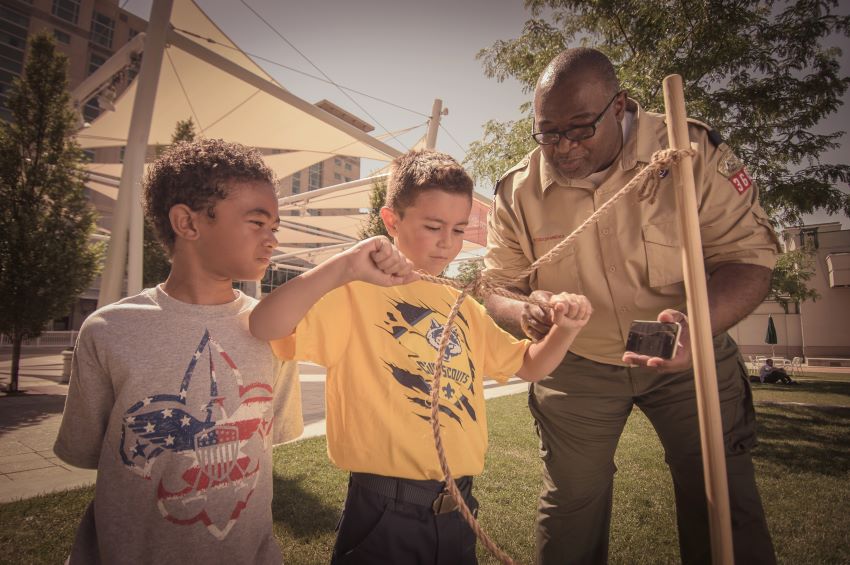How Your Family Can Be Prepared
September is National Preparedness Month—a time dedicated to reminding families, schools, and communities that emergencies can happen at any time. From sudden storms to unexpected power outages, being ready is not just about having supplies on hand. It’s about building confidence, resilience, and a plan that keeps your loved ones safe.
Preparedness can feel overwhelming at first, but the truth is simple: small steps today make a big difference tomorrow. In this post, we’ll break down how your family can stay prepared with practical strategies, emergency essentials, and tips for teaching kids the importance of readiness.
Why Family Preparedness Matters
Emergencies rarely arrive with warning. A severe storm can knock out power for days. An accident on the road can leave you stranded. Even a small disruption—like losing cell service—can create stress if you don’t have a backup plan.
That’s why family emergency preparedness is so important. A little foresight means you’ll know what to do, where to go, and how to communicate when life doesn’t go according to plan. Preparedness reduces panic and replaces it with peace of mind.
For parents especially, readiness isn’t optional—it’s part of protecting the people who rely on you most.
Building Your Family Emergency Plan
Every strong preparedness effort begins with a clear plan. Think of it as your family’s guidebook for what to do if an emergency strikes.
Talk It Through
Set aside time to discuss scenarios with your family. Where will you meet if you can’t reach each other? Who will you contact outside your city or state as a backup? Involving kids in the conversation helps them feel confident and reduces fear.
Practice Your Plan
It’s one thing to talk through an emergency—it’s another to try it. Hold practice drills for fire evacuation or severe weather sheltering. Repetition builds muscle memory, so everyone knows their role when it matters.
Write It Down
Once you’ve mapped out your family’s emergency preparedness plan, write it down. Post copies in your home, keep one in your go-bag, and make sure older kids know how to access it.


Stocking Up on Emergency Essentials
Preparedness isn’t only about plans—it’s about having the right gear ready to go. Whether you call it a “go-bag,” an “emergency kit,” or simply your family emergency essentials, make sure your supplies cover the basics of survival and comfort.
What to Include in Your Family Emergency Kit
- First Aid Supplies: bandages, antiseptics, pain relievers, prescription medications
- Light Sources: flashlights, headlamps, and extra batteries
- Clean Water: bottled water, purification tablets, or portable filters
- Food: non-perishable snacks and ready-to-eat meals
- Warmth: blankets, extra clothing, and hand warmers
- Communication Tools: a whistle, a battery-powered radio, and backup power for phones
- Important Documents: copies of IDs, insurance papers, and emergency contacts
Think about your family’s unique needs as well. Add formula, diapers, or comfort items if you have young children. For pets, pack food, leashes, and water bowls. Customizing your kit ensures no one is left out.
Teaching Kids to “Be Prepared”
Being prepared is a mindset. Teaching kids what to do in an emergency gives them confidence and helps them contribute to the family’s safety.
Make It Fun
Instead of making preparedness feel scary, turn it into an adventure. Teach knot-tying, flashlight signaling, or map reading as games. These skills build confidence and create positive associations with readiness.
Give Them Responsibility
Even young kids can be responsible for carrying a flashlight or whistle. Older children can help check batteries, restock first aid kits, or review the emergency plan with younger siblings.
Reinforce the Motto
Scouting’s motto—Be Prepared—is as relevant at home as it is in the program. Remind kids that being prepared isn’t about fear. It’s about being ready to help themselves and others.
Staying Ready Beyond September
National Preparedness Month may shine a spotlight on safety each September, but emergencies don’t follow a calendar. Preparedness is an ongoing practice. Refresh your go-bag every season. Replace expired food and medications. Update your plan if your family moves, changes schools, or adds new members.
Preparedness isn’t about expecting the worst. It’s about giving your family the tools, confidence, and calm to handle whatever comes next.


Be Ready for Any Emergency with Some Help from Scout Shop
When it comes to emergencies, you can’t control the when or where—but you can control how ready your family is. By creating a plan, stocking up on essentials, and teaching kids the importance of readiness, you’re building resilience and peace of mind that lasts far beyond National Preparedness Month.
Be Prepared. Stay Ready. Because the best time to prepare is before the emergency happens.
For first aid kits, flashlights, solar-powered chargers, and other safety essentials, visit ScoutShop.org—the official store of Scouting America!



